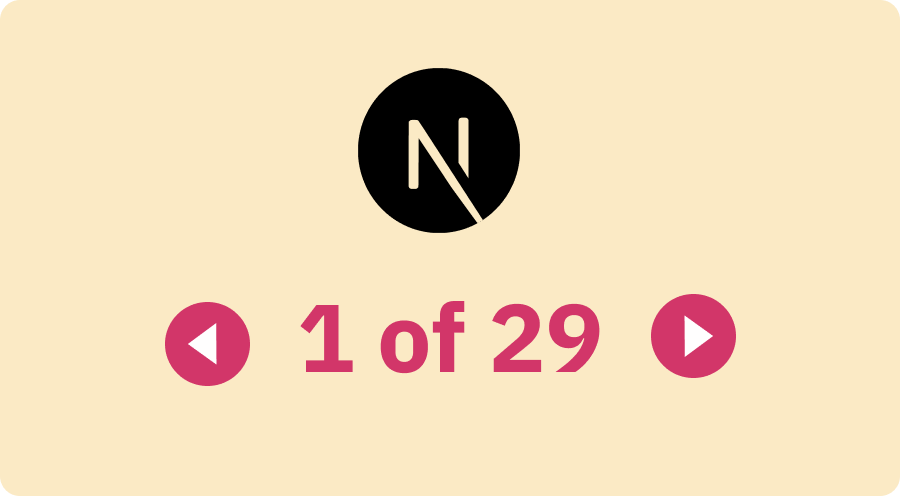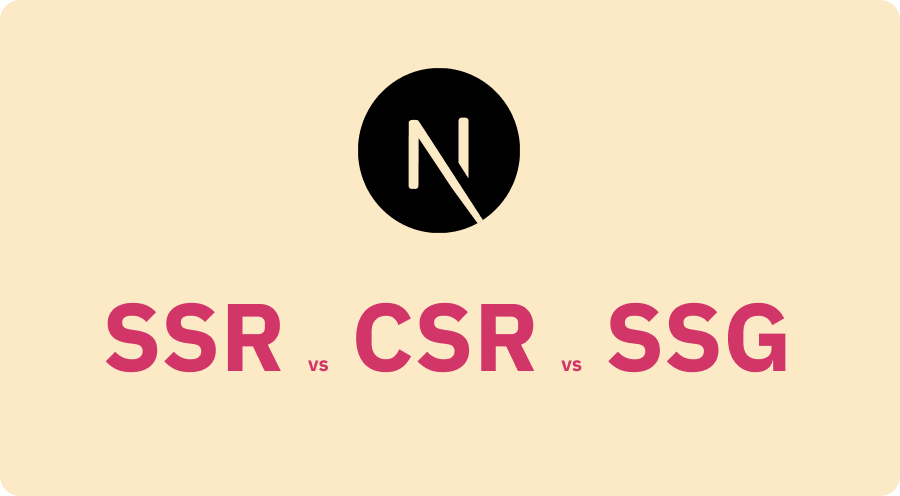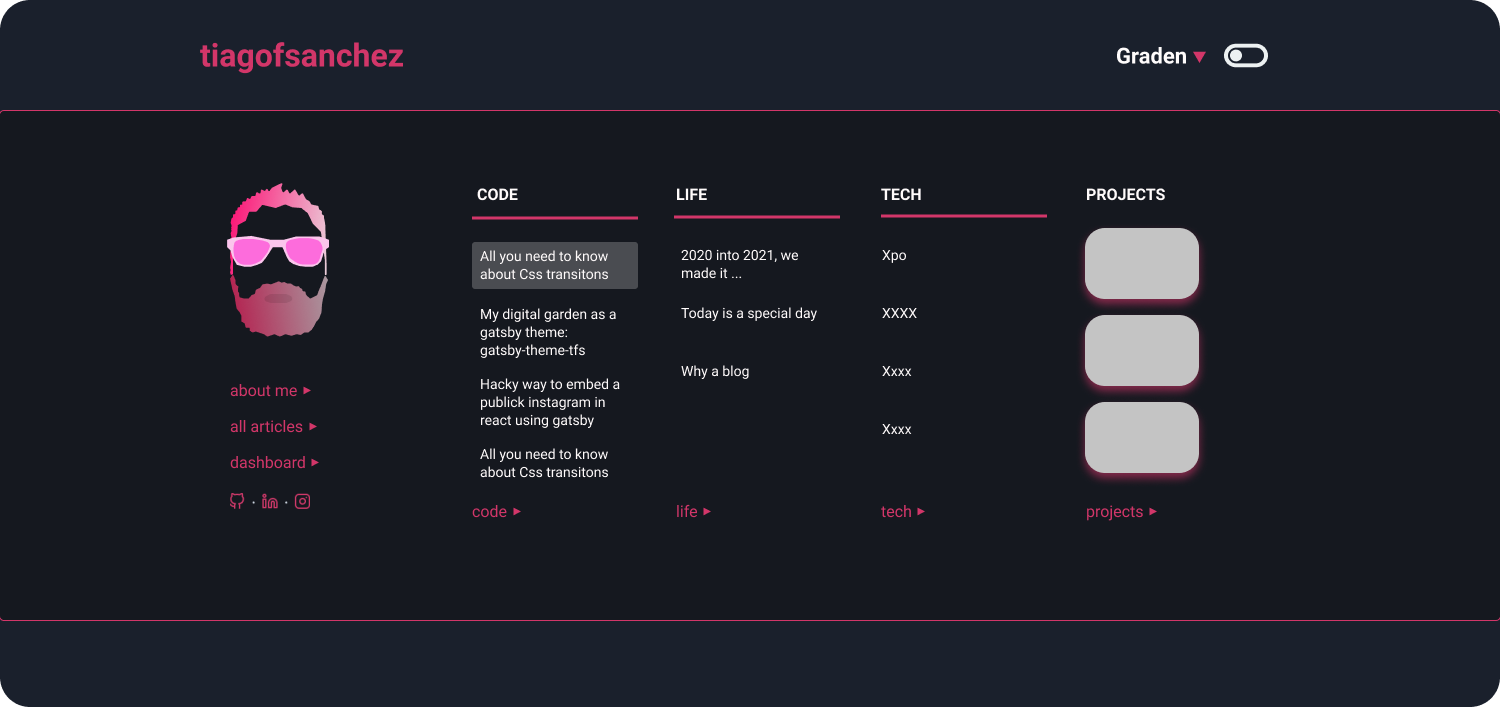Paginating through cards in NextJS not changing the url
June 05, 2021 . 3 min read
nextjs
pagination
learning
I came across the need to render a certain number of cards, that would grow over time, in a static generated NextJS project and thought about designing a method that would help me to paginate through that array.
This post tries to explain how to implement that.
Paginating through my array
The first thing that I needed to do was to find a way how to grab a given array of data, select the page that I am in and the number of items I want per page and return back the following very important variables:
- total number of pages
- items per page (input)
- total number of items
- previous page
- next page
- page (input)
- dataPaginated
Let's set up our new function that we will call paginate, get the total number of pages depending on the number of items per page and the number of items on our array.
paginate.js
export const paginate = (array, page = 1, per_page = 4) => { const total_pages = Math.ceil(array.length / per_page); return { page: page , //returning what we passed per_page: per_page , //returning what we passed pre_page: , next_page: , total: array.length, //total number of items total_pages: total_pages, dataPaginated: , };};Following that we will need to understand how to create an array with the paginate data and for that we will need to do nested slice. And because we are still missing the previous and next page we will be establishing that here as well.
paginate.js
export const paginate = (array, page = 1, per_page = 4) => { const offset = (page - 1) * per_page; const paginatedItems = array.slice(offset).slice(0, per_page); const total_pages = Math.ceil(array.length / per_page); return { page: page, per_page: per_page, pre_page: page - 1 ? page - 1 : null, next_page: total_pages > page ? page + 1 : null, total: array.length, total_pages: total_pages, dataPaginated: paginatedItems, };};And that is it for your paginate function. You can now stick it in your lib folder and called whenever you need it.
We still need to figure a way to use this new function to paginate through the cards or items that you want and for that we will be using our hooks: useState and useEffect.
Using state to store the relevant data
Now imagine that we have a component that will receive an array of elements that you would like to create the pagination for. You would have to receive that array, run paginate() function, stick it in our state and render our dataPaginated, pre_page, next_page to be able to flick through the different pages.
That component would look as follows:
MyCards.js
export const MyCards = ({ cardArray }) => { const [data, setData] = useState(); const newData = paginate(cardArray); useEffect(() => { setWaveData({ ...newData }); }, [cardArray]); const prevPage = () => { const prevPageData = paginate(cardArray, data.pre_page); setWaveData({ ...prevPageData }); }; const nextPage = () => { const nextPageData = paginate(cardArray, data.next_page); setWaveData({ ...nextPageData }); }; return ( <> <p onClick={prevPage}>{data?.pre_page}</p> <p> {waveData?.page} of {data?.total_pages} </p> <p onClick={nextPage}>{data?.next_page}</p> {data.map((card) => ( <p>{card.name}</p> ))} </p> );};Next you just need to create your pagination component with the style in the way you fancy.
Hope this was helpful. x`
More posts about Code
Deploying Keystone-6 with Render
1 minutes read
Thinking how to fetch data in nextjs
3 minutes read
Learning Advanced React with Wesbos
4 minutes read
Designing and implementing a megamenu in my digital garden
3 minutes read
All you need to know about CSS transitions
2 minutes read
My digital garden as a gatsby theme: gatsby-theme-tfs
3 minutes read
Subscribe
No spam! Only good stuff!






